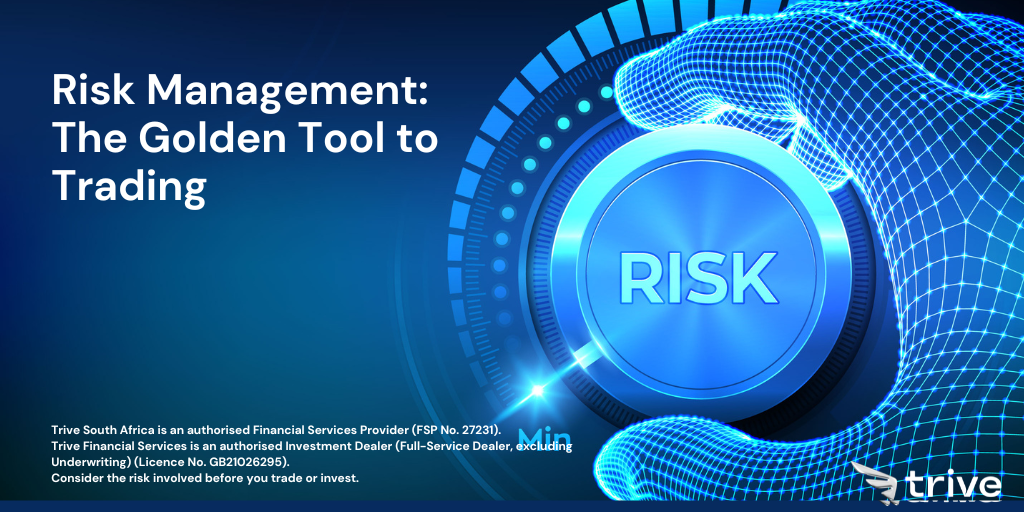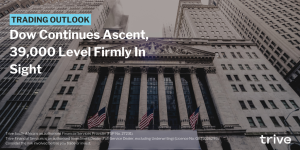
Trading the financial markets can be a daunting task. While it offers lucrative returns, even the most successful and experienced traders often find themselves on the wrong side of a trade. The markets are unpredictable and often require a wide array of tools and resources to conquer. However, there is one factor that separates consistently successful traders from the rest: risk management. From day trading to swing trading, risk management remains one of the cornerstones of success, and those who have a rigorous risk management strategy in place could increase their likelihood of achieving profitability through trading.
Risk Tolerance
Determining your risk tolerance is the first step toward setting up a risk management strategy. This defines the amount a trader is willing to risk per day or trade. While each trader’s risk tolerance would differ based on account size and trading style, a general rule of thumb is not to risk more than 1% of your account on a single trade. Essentially, if your account size is $10,000, the rule suggests that you should not risk more than $100 per trade. This allows a trader to cap losses on a bad day and limit the losses incurred when a trader engages in sporadic or emotional trading. Limiting the amount of risk per trade also protects the trader’s account, allowing a larger room for error in the success rate of a strategy.
Sticking to Risk Tolerance
Once a risk tolerance is defined, sticking to your rule when managing a trade is crucial. One way to achieve this is by using a stop loss. A stop loss is a tool that allows a trader to set a predetermined price at which a trade will automatically get closed. For example, if a trader with a $10,000 account enters into a trade and places a stop loss at the level where the loss would be $100 if the trade moves against them, they are protected from unexpected market volatility by ensuring that rapid market movements will not result in a loss larger than the 1% risk tolerance.
However, it is worth noting that stop losses are not always guaranteed. If the market behaves erratically and price gaps form, slippage can occur, where the trade will not be closed out at the predetermined level. One of the ways to avoid slippage is by entering into a guaranteed stop loss. This eliminates the risk of slippage entirely, ensuring that the trade will always get executed at the predetermined level. Still, it comes with a cost, as brokers will charge a small portion of the trade to guarantee the stop.
Risk – Reward Ratio
Along with a stop loss, a trader must decide when to close out a profitable position. The risk–reward ratio measures the amount a trader will gain for every dollar risked per trade. Maintaining a positive risk–reward ratio is a crucial component of the risk management process. For example, if a trader is willing to risk $100 on a trade, a 1:2 risk-reward ratio would result in the trader taking profit at $200 if the trade moves in the right direction. This increases the likelihood of profitability in the longer term, as two losing trades only require one winning trade to break even.
Psychology
While having a set risk tolerance in place, setting your stop loss at the required level and maintaining a positive risk–reward ratio are all important risk management factors, traders often struggle to stick to these rules due to the market’s psychological challenges. From fear and greed to excitement and FOMO, managing emotions is one of the most important and often overlooked components of a risk management strategy. Often, stubborn traders may not exit losing trades quickly enough, believing the market will turn in their favour. Another typical example of straying from your trading rules could occur when a trader makes a loss and, due to the emotional strain of the loss, enters into a larger trade to recoup these losses and, in the process, strays away from their appropriate position sizing and risk tolerance. One of the best ways to manage emotions is to have a set trading strategy in place with specific rules that need to be followed. These include the market conditions in which you want to trade when to open and close your positions, your risk management rules, and certain criteria that need to be met in order to enter into the trade. These rules are often seen as a ‘checklist’, where a trader needs to check all the boxes of his trading plan before entering into a trade.
Setting up your trading plan requires time, and it is often suggested to keep a trading diary to record your trades and make note of the different movements observed in your trades. Through trial and error, a trader can generate a trading plan with clearly defined entry and exit strategies, which could prevent trading on fear and greed while maintaining a disciplined approach.
Summary
Trading the financial markets is no easy feat, and incurring losses is inevitable. However, with a proper risk management strategy in place, a trader can increase the likelihood of being profitable over the long term. By having a clearly defined risk tolerance, using tools such as a stop loss and maintaining a positive risk-reward ratio, as well as following a clearly defined trading plan, traders can avoid the emotional effects of trading by sticking to a disciplined plan to maintain profitability in the long-term through a proven strategy.
Sources: Investopedia, CMC Markets, Admiral Markets
Piece written by Tiaan van Aswegen, Trive Financial Market Analyst
Disclaimer: Trive South Africa (Pty) Ltd (hereinafter referred to as “Trive SA”), with registration number 2005/011130/07, is an authorised Financial Services Provider in terms of the Financial Advisory and Intermediary Services Act, 37 of 2002. Trive SA is authorised and regulated by the South African Financial Sector Conduct Authority (FSCA) and holds FSP number 27231. Trive Financial Services Ltd (hereinafter referred to as “Trive MU”) holds an Investment Dealer (Full-Service Dealer, excluding Underwriting) Licence with licence number GB21026295 pursuant to section 29 of the Securities Act 2005, Rule 4 of the Securities Rules 2007, and the Financial Services Rules 2008. Trive MU is authorized and regulated by the Mauritius Financial Services Commission (FSC) and holds Global Business Licence number GB21026295 under Section 72(6) of the Financial Services Act. Trive SA and Trive MU are collectively known and referred to as “Trive Africa”.
Market and economic conditions are subject to sudden change which may have a material impact on the outcome of financial instruments and may not be suitable for all investors. Trive Africa and its employees assume no liability for any loss or damage (direct, indirect, consequential, or inconsequential) that may be suffered. Please consider the risks involved before you trade or invest. All trades on the Trive Africa platform are subject to the legal terms and conditions to which you agree to be bound. Brand Logos are owned by the respective companies and not by Trive Africa. The use of a company’s brand logo does not represent an endorsement of Trive Africa by the company, nor an endorsement of the company by Trive Africa, nor does it necessarily imply any contractual relationship. Images are for illustrative purposes only and past performance is not necessarily an indication of future performance. No services are offered to stateless persons, persons under the age of 18 years, persons and/or residents of sanctioned countries or any other jurisdiction where the distribution of leveraged instruments is prohibited, and citizens of any state or country where it may be against the law of that country to trade with a South African and/or Mauritius based company and/or where the services are not made available by Trive Africa to hold an account with us. In any case, above all, it is your responsibility to avoid contravening any legislation in the country from where you are at the time.
CFDs and other margin products are complex instruments and come with a high risk of losing money rapidly due to leverage. You should consider whether you understand how these products work and whether you can afford to take the high risk of losing your money. Professional clients can lose more than they deposit. See our full Risk Disclosure and Terms of Business for further details. Some or all of the services and products are not offered to citizens or residents of certain jurisdictions where international sanctions or local regulatory requirements restrict or prohibit them.




